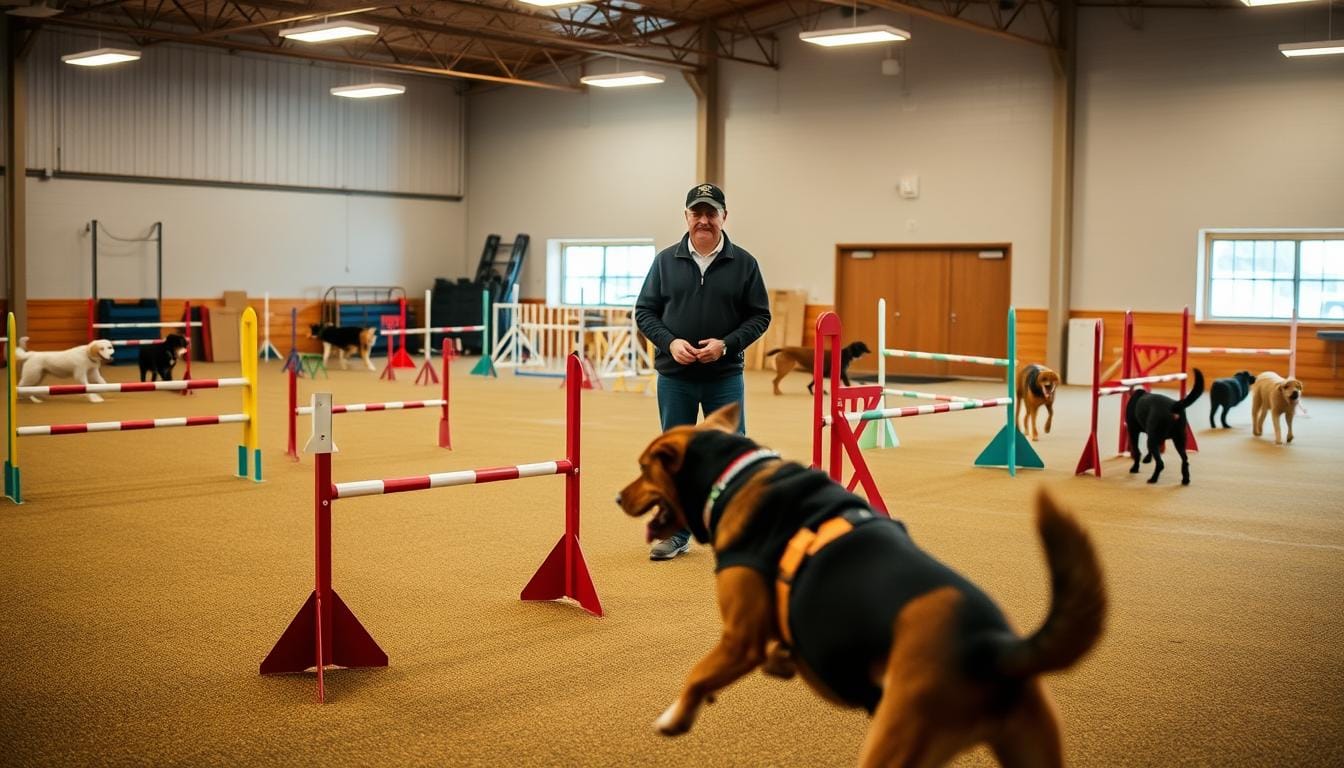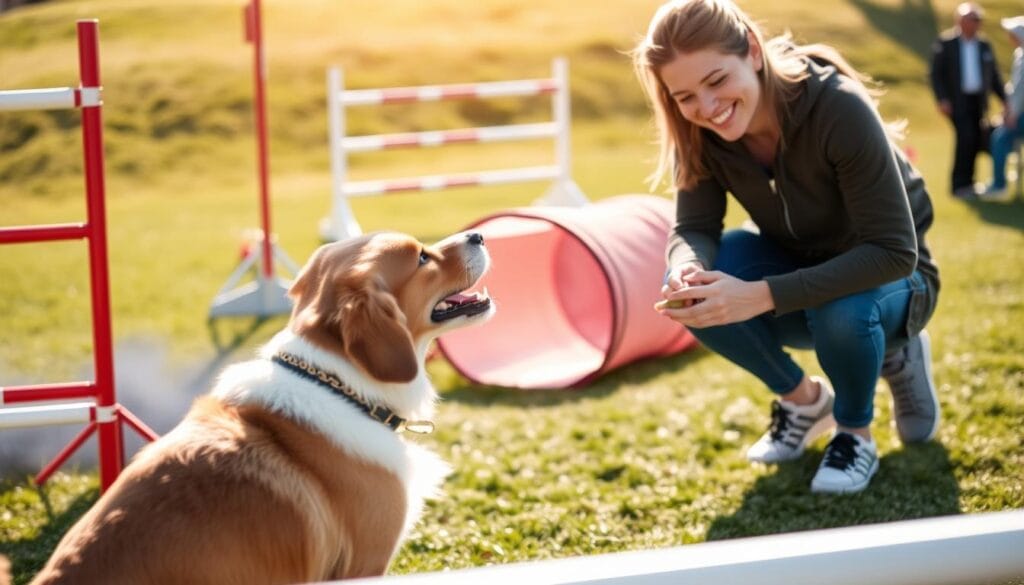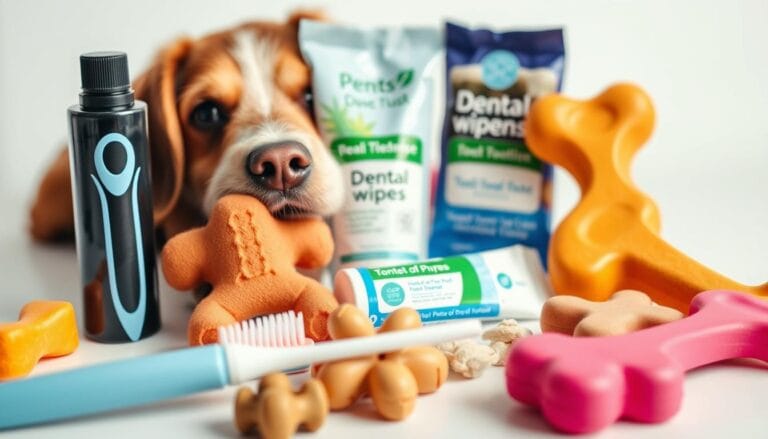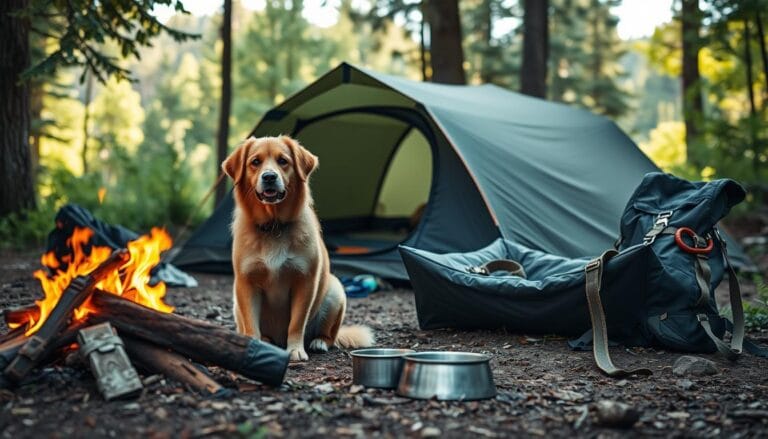Dog Agility Training Near Me: 10 Expert Tips for Beginners

Are you wondering if your pet can become a star in the dog agility world? With the right guidance, your furry friend can excel in this exciting sport. Expert dog agility coaching can make all the difference, providing you with the tools and knowledge to help your pet succeed. If you’ve ever searched for dog agility training near me, you’re already on the right path to giving your dog the opportunity to shine.
Finding the right dog agility training near me can be a challenge, but with these 10 expert tips, you’ll be well on your way to creating a fun and rewarding experience for both you and your pet. From setting up a safe training environment to understanding the basics of the sport, this article will guide you through the process.
Table of Contents
Understanding the Basics of Dog Agility Training
If you’re considering enrolling your dog in local agility classes, understanding the basics of dog agility training near me is essential to ensure you choose the right program and prepare your pet for success.
Dog agility training is a fun and engaging way to challenge your dog physically and mentally. It involves guiding your dog through a variety of obstacles, such as tunnels, jumps, and weave poles.
What is Dog Agility Training?
Dog agility training near me is a popular search among pet owners interested in this exciting dog sport, which involves navigating a dog through an obstacle course with the guidance of a handler. The goal is to complete the course in the shortest time possible while maintaining accuracy and control.
Benefits for Both Dogs and Owners
Searching for dog agility training near me can open the door to numerous benefits for both dogs and their owners. For dogs, it provides physical exercise, mental stimulation, and an opportunity to bond with their handler. For owners, it offers a fun way to engage with their dogs, improve communication, and build trust.
Popular Agility Obstacles Explained
Some of the most popular agility obstacles include tunnels, jumps, weave poles, and contact obstacles like the A-frame and dog walk. Understanding these obstacles is crucial for anyone looking to enroll in best agility training for dogs programs.
By grasping the basics of dog agility training, dog owners can make informed decisions about enrolling their dogs in local dog agility classes and setting them up for success in this exciting dog sport.
How to Find the Best Dog Agility Training Near Me
When searching for dog agility training near me, it’s essential to know where to look and what to look for. This involves a combination of research, due diligence, and understanding what makes a training program effective.
Researching Local Training Centers and Clubs
Start by identifying local dog training centers and clubs that offer agility training. These can be found through online directories, local pet stores, or veterinary recommendations. Top dog agility trainers often affiliate themselves with reputable clubs or centers.
Online Resources for Finding Nearby Classes
To find dog agility training near me, utilize online resources such as search engines, social media, and dedicated pet training websites. Websites like Meetup.com or local Facebook groups can also provide valuable information on training groups and events in your area.
Questions to Ask Potential Trainers
When reaching out based on your search for dog agility training near me, ask potential trainers about their experience, training methods, and class sizes. It’s crucial to understand their approach to dog agility and how they cater to different dog breeds and temperaments.
Evaluating Training Facilities Before Committing
Before committing to a training program, evaluate the facilities to ensure they are safe, well-maintained, and suitable for your dog’s needs. Consider factors like equipment quality, space, and the overall environment.
| Evaluation Criteria | Importance Level | Notes |
|---|---|---|
| Facility Cleanliness | High | Ensure the facility is clean and hygienic. |
| Equipment Quality | High | Look for sturdy, well-maintained equipment. |
| Trainer Experience | High | Check for certifications and experience. |
| Class Size | Medium | Smaller classes often provide better attention. |
Assessing Your Dog’s Readiness for Agility Training
Before committing to dog agility training near me, assessing your dog’s suitability for agility training is a vital first step. It involves evaluating several factors to ensure that your dog is physically and mentally prepared for this demanding yet rewarding activity.
Age and Physical Requirements
Most professional dog agility instructors recommend that dogs should be at least a year old before starting formal agility training. This allows for proper physical development, reducing the risk of injury. Ensure your dog is physically fit and has a good body condition score.
Breed Considerations and Limitations
If you’re exploring dog agility training near me, keep in mind that while many breeds can participate in agility training, some may have physical limitations. For instance, giant breeds may be prone to joint issues, whereas very small breeds might struggle with certain obstacles. Research your breed’s specific needs and limitations.
Temperament and Focus Assessment
A dog’s temperament and ability to focus are crucial for successful agility training. A calm and focused dog will perform better and enjoy the training more. Assess your dog’s behavior in various environments to gauge their suitability.
Preliminary Skills Your Dog Should Master
Before diving into agility training, your dog should have basic obedience skills, such as sit, stay, and recall. Enrolling in affordable dog agility lessons can help you identify areas for improvement. A dog with a solid foundation in obedience will transition more smoothly into agility training.
By carefully assessing these factors, you can determine if your dog is ready for agility training and set them up for success in this exciting sport.
Essential Equipment for Beginner Agility Training
Before starting dog agility training near me, it’s important to have the right equipment to ensure a safe and effective learning experience. As a beginner, understanding what tools are necessary will help you and your dog get started on the right paw.
Must-Have Training Tools
The foundation of any agility training setup includes tunnels, jumps, weave poles, and contact obstacles like the A-frame and dog walk. These pieces of equipment help introduce dogs to various challenges they’ll face in agility competitions. When setting up your home training area, consider starting with these essentials.
Tunnels and jumps are fundamental. Tunnels can be made from flexible materials like PVC or fabric, while jumps can be constructed using bars and standards. Weave poles are another critical component, teaching dogs to weave in and out of vertical poles.
Budget-Friendly DIY Agility Equipment
If you’re exploring dog agility training near me and want a budget-friendly option, creating your own agility equipment can be cost-effective and fun. For instance, you can make tunnels using cardboard boxes or PVC pipes. Jumps can be constructed from PVC pipes and connectors, and weave poles can be made from wooden dowels or PVC pipes. This DIY approach allows you to customize the equipment to your dog’s needs and your training space.
| Equipment | DIY Materials | Cost Estimate |
|---|---|---|
| Tunnels | Cardboard boxes or PVC pipes | $0 – $50 |
| Jumps | PVC pipes and connectors | $20 – $100 |
| Weave Poles | Wooden dowels or PVC pipes | $30 – $150 |
When to Invest in Professional Equipment
As you and your dog progress in agility training, you may find the need to upgrade to more durable, professional-grade equipment. This is especially true if you’re planning to participate in competitions or if your dog requires more challenging obstacles.
Safety Features to Look For
Safety should always be a top priority when setting up your agility training area. Look for equipment with rounded edges, stable bases, and non-slip surfaces. Regularly inspect your equipment for damage and make repairs as needed to prevent injuries.

Building a Strong Foundation with Basic Commands
To excel in dog agility training, it’s essential to start with a solid understanding of basic commands. These foundational commands not only facilitate a smoother training process but also strengthen the bond between dog and handler.
Core Commands for Agility Success
Certain commands are crucial for dog agility training success. These include “sit,” “stay,” “come,” “down,” and “heel.” Mastering these commands lays the groundwork for more complex agility maneuvers.
Training Techniques for Consistent Response
Consistency is key when training your dog to respond to basic commands. Techniques such as positive reinforcement, where desired behaviors are rewarded, can significantly enhance your dog’s responsiveness. Expert dog agility coaching often emphasizes the importance of clear, consistent commands and rewards.
Transitioning Commands to Agility Context
Once your dog has mastered basic commands, it’s time to transition these skills to an agility context. This involves incorporating commands into obstacle courses and other agility training exercises. The goal is to ensure your dog responds reliably in a variety of situations.
Troubleshooting Common Command Issues
Even after finding the right dog agility training near me, issues can still arise. Common problems include inconsistent responses to commands and distractions during training. Troubleshooting these challenges often involves revisiting foundational techniques and adjusting your approach to better suit your dog’s learning style.
By focusing on basic commands and gradually building upon them, you can create a strong foundation for successful dog agility training. Whether you’re searching for “dog agility training near me” or working with an expert coach, a solid understanding of basic commands is indispensable.
Mastering the Art of Positive Reinforcement
The art of positive reinforcement is essential for dog owners to master in agility training. Positive reinforcement is a training method that focuses on rewarding desired behaviors rather than punishing undesired ones.

Effective Reward Systems for Different Dog Personalities
Different dogs respond to various reward systems. For instance, some dogs are highly motivated by treats, while others prefer praise or play. Understanding your dog’s personality is crucial in determining the most effective reward system.
Timing Your Rewards for Maximum Impact
The timing of rewards is critical in positive reinforcement. Rewards should be given immediately after the desired behavior to create a clear association.
Clicker Training for Agility
Clicker training is a popular method used in agility training. It involves using a clicker to mark the exact moment a desired behavior occurs, followed by a reward.
Avoiding Common Reinforcement Mistakes
One common mistake is inconsistent rewarding. It’s essential to reward desired behaviors consistently to avoid confusing your dog.
By mastering positive reinforcement techniques, dog owners can create a positive and effective learning environment for their dogs in local dog agility classes or during best agility training for dogs at home.
Introducing Your Dog to Agility Obstacles Safely
A well-structured introduction to agility obstacles can make a significant difference in your dog’s training experience. It’s essential to approach this process with care to ensure your dog remains engaged and injury-free.
Starting with Low-Impact Obstacles
Begin with obstacles that are low-impact and easy for your dog to understand and navigate. Tunnels and cones are excellent starting points as they are simple and fun for dogs to learn.
Proper Progression Techniques
Progressing your dog through agility obstacles should be done gradually. Start with simple tasks and gradually increase the complexity as your dog becomes more confident and skilled.
Safety Considerations for Each Obstacle Type
Different obstacles have different safety considerations. For example, jumps should be adjusted according to your dog’s size and ability, while contact obstacles like the A-frame require careful supervision to prevent injuries.
Signs Your Dog is Ready to Advance
Watch for signs that your dog is ready to move on to more challenging obstacles. These signs include consistent success at current levels, increased confidence, and a clear eagerness to tackle new challenges.
| Obstacle Type | Safety Consideration | Signs of Readiness to Advance |
|---|---|---|
| Jumps | Adjust height according to dog’s size | Consistently clears jumps without hesitation |
| Tunnels | Ensure tunnel is stable and secure | Runs through tunnel quickly and confidently |
| Contact Obstacles | Supervise closely to prevent injuries | Completes obstacle correctly and touches contact zone |
By following these guidelines and being mindful of your dog’s progress, you can create a safe and enjoyable agility training experience. For top dog agility trainers and nearby dog agility training programs, consider researching local training centers and clubs that align with your dog’s needs and your training goals.
Developing Handler Skills for Effective Communication
Effective communication between a handler and their dog is crucial for successful dog agility training. Handlers must develop a range of skills to guide their dogs through complex courses efficiently.
Body Language Fundamentals
A handler’s body language significantly impacts their dog’s performance. Maintaining a confident and relaxed posture helps dogs feel more secure and focused. Handlers should be aware of their movements and positioning relative to their dog.
Verbal Cue Consistency
Consistency in verbal cues is vital for clear communication. Handlers should use clear, concise commands and avoid confusing their dog with varied or complex cues.
Handling Techniques for Beginners
- Start with simple courses and gradually increase complexity.
- Practice guiding your dog through tunnels and around jumps.
- Use positive reinforcement to encourage good handling techniques.
Common Handler Mistakes to Avoid
Handlers should avoid being too tense or reactive, as this can negatively impact their dog’s performance. Working with professional dog agility instructors can help handlers identify and correct these mistakes.
Creating an Effective Training Schedule
A well-planned training schedule is the backbone of any dog agility training program. It ensures consistency, progression, and safety for both the dog and the handler.
Optimal Session Length and Frequency
Training sessions should be short and focused, typically lasting between 10 to 15 minutes, to keep the dog engaged and prevent fatigue. For most dogs, 3 to 4 sessions per week is an ideal frequency, allowing for adequate rest and recovery time.
Balancing Training with Rest and Recovery
A balanced schedule includes rest days to prevent overtraining and allow the dog’s muscles to recover. It’s crucial to listen to your dog’s cues and adjust the schedule as needed.
| Day | Activity | Duration |
|---|---|---|
| Monday | Agility Training | 15 minutes |
| Tuesday | Rest | – |
| Wednesday | Agility Training | 15 minutes |
Adapting Your Schedule as Skills Improve
As your dog becomes more proficient in agility training, you can gradually increase the complexity and duration of the training sessions.
Tracking Progress and Setting Milestones
Keep a training log to track your dog’s progress and set realistic milestones. This will help you stay motivated and adjust your training schedule as needed.
Transitioning from Backyard Practice to Competitive Events
As dog owners progress in their agility training journey, they may consider taking the next step into competitive events. This transition requires careful evaluation of their dog’s readiness and an understanding of the competitive landscape.
When You’re Ready for More Formal Training
Determining readiness for competitive agility involves assessing your dog’s physical and mental preparedness. Expert dog agility coaching can provide valuable insights into your dog’s abilities and help you identify areas for improvement. Look for signs such as consistent performance in backyard training, ability to navigate complex courses, and a strong bond between you and your dog.
Types of Competitions for Beginners
For those new to competitive agility, there are various types of events to consider. Local agility clubs often host fun matches or introductory competitions designed for beginners. These events provide a supportive environment to gain experience and build confidence. As you progress, you can explore more formal competitions sanctioned by organizations like the United States Dog Agility Association (USDAA) or the American Kennel Club (AKC).
Setting Realistic Expectations
It’s essential to set realistic expectations when entering competitive agility. Understand that your primary goal may be to have fun and strengthen your bond with your dog, rather than winning. Focus on improving your skills and your dog’s performance, and celebrate small victories along the way.
Building a Supportive Agility Community
Connecting with other agility enthusiasts can significantly enhance your competitive experience. Join local agility clubs, attend workshops, and participate in online forums to build a supportive community. Sharing experiences and learning from others can help you navigate the challenges of competitive agility and enjoy the journey with your dog.
Sources:
https://www.akc.org/sports/agility/getting-started/?
https://www.usdaa.com/news/agility-benefits-for-dogs-and-handlers.cfm?
https://www.thesprucepets.com/best-dog-agility-equipment-7090806?
https://www.oneminddogs.com/blog/how-to-get-started-in-dog-agility/?
https://www.holistapet.com/blogs/dog-care/best-dog-agility-training-guide?
https://www.ellevetsciences.com/blog/agility-training-for-dogs/?
Conclusion: Embarking on Your Dog Agility Journey
Dog agility training offers a fun and rewarding way to challenge your dog physically and mentally. By understanding the basics, finding the right local dog agility classes, and investing in the best agility training for dogs, you can set your dog up for success.
With the knowledge gained from this article, you’re now ready to start your dog agility journey. Begin by assessing your dog’s readiness, building a strong foundation with basic commands, and introducing them to agility obstacles safely.
As you progress, you’ll be able to find the best agility training for dogs that suits your needs. Whether you’re looking for local dog agility classes or training in the comfort of your own home, the key is to keep the training fun and engaging for your dog.
By following these steps and staying committed, you and your dog can enjoy the many benefits that dog agility training has to offer. So why wait? Start exploring local dog agility classes today and watch your dog thrive in this exciting new activity.



